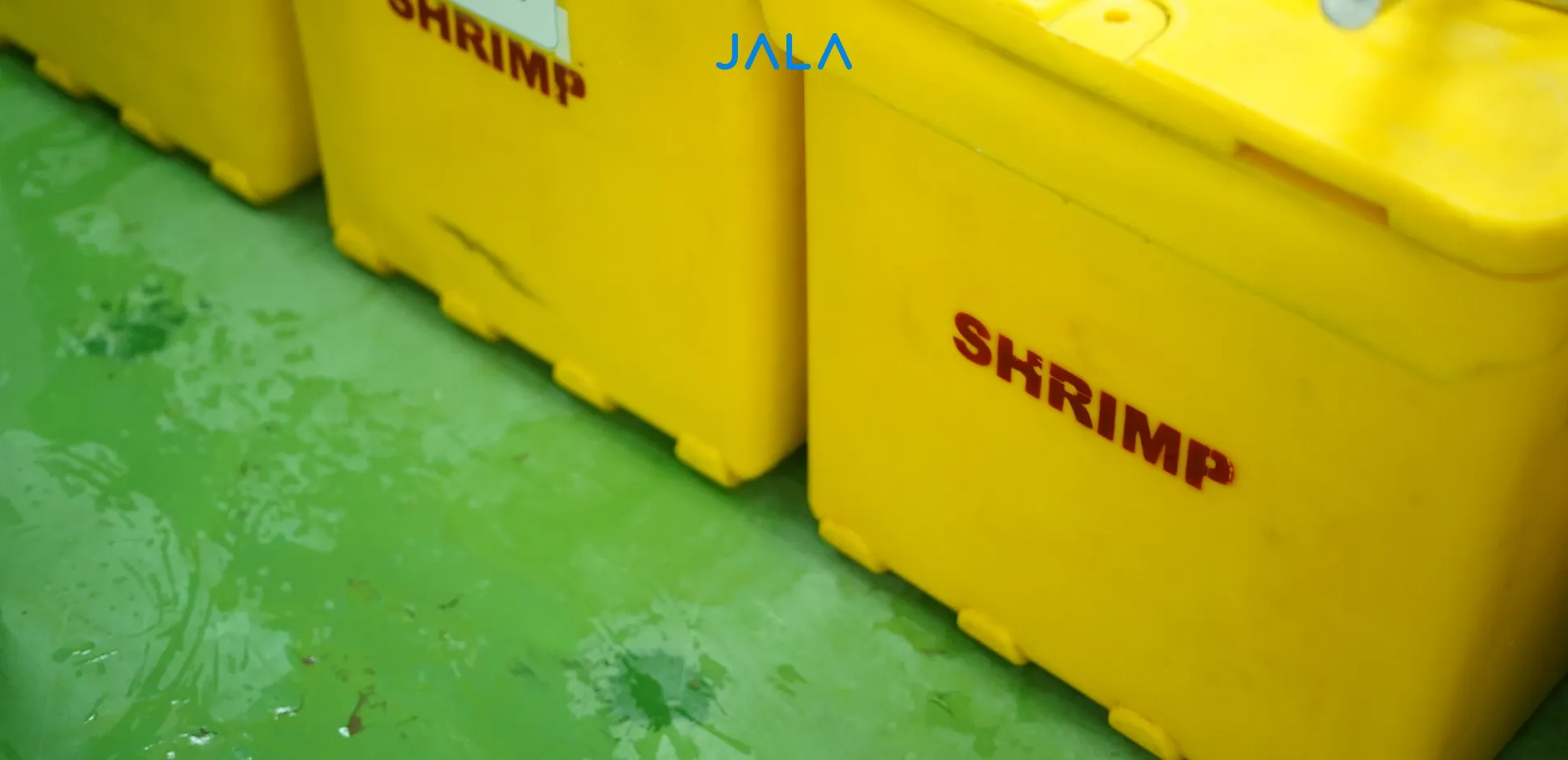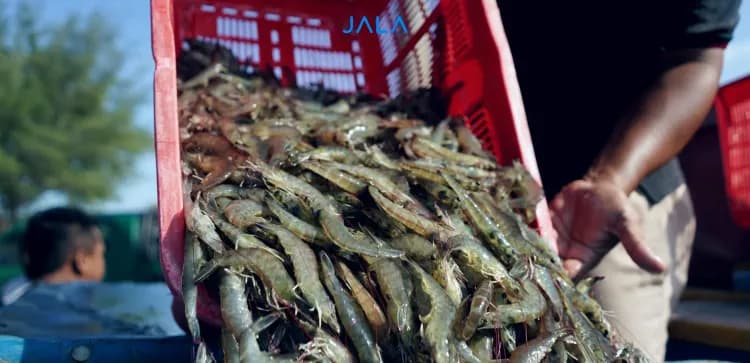
As of the third quarter of 2023, Indonesia occupies fourth position in the ranks of vannamei shrimp exporting countries. As one of Indonesia's leading export commodities, the shrimp export business continues to be promoted by the Indonesian government. In fact, shrimp exports are targeted to increase by up to 250% in 2024.
According to the Ministry of Marine Affairs and Fisheries (KKP), Indonesia's shrimp export target markets include the United States (US), Japan, ASEAN (9 countries), and the European Union (27 countries), with a positive growth rate of 12.97 percent per year in 2022. However, Indonesia's share in the global shrimp market is still relatively low, at around 6 percent.
Currently, the US is the top destination for Indonesian exports. According to Fish Quarantine and Quality Control Agency (BKIPM) data, 81.82% of packaged shrimp products were exported to the US in 2022. Likewise with processed shrimp products, export destinations are dominated by the US with a percentage of 59.28%. These significant proportions make Indonesia heavily reliant on the US shrimp market.
When the US issued dumping allegations and countervailing duty petitions against shrimp producing countries in 2023, the Indonesian shrimp industry was also impacted. These allegations and petitions indirectly caused shrimp prices to decline. Thus, farmers had to temporarily halt production due to this issue.
Read further: Unraveling the Impact of Dumping Allegations and Countervailing Duty to Indonesia’s Shrimp Industry
Potential Alternative Markets
To increase Indonesia's market share in the shrimp export market, it is important to not just focus on countries that are already major shrimp importers such as the US, but also to explore other promising countries as potential new export destinations. The following are several countries that have potential as alternative export destinations for shrimp commodities:
Saudi Arabia
The first potential export destination country for Indonesian shrimp is Saudi Arabia. According to seafoodsource.com, Saudi Arabia has temporarily banned shrimp imports from India due to cases of white spot disease. The country imposes strict requirements concerning biosecurity risks and the safety of imported products. While Saudi Arabia has a relatively high production of farmed shrimp, its domestic market still heavily relies on shrimp imports. It is estimated that Saudi Arabia's shrimp imports will continue to increase by 2.5% annually.
United Arab Emirates (UAE)
The United Arab Emirates (UAE) is another potential market for Indonesian shrimp exports due to its high seafood demand. In 2022, the UAE imported 51 thousand tons of shrimp, mostly from Ecuador and Argentina. Thus, Indonesia has a high potential to penetrate this market.
South Korea
South Korea is also a potential market for shrimp exports. This country has promising aquaculture resources and a high seafood consumption rate. However, shrimp imports in South Korea are still much higher than its exports. South Korea imports shrimp mostly from Vietnam, Thailand, and Ecuador, with vannamei shrimp as the main species. In fact, South Korea is the third-largest importer of vannamei shrimp from Vietnam after the US and Japan.
France
When exploring the potential for shrimp exports to Europe, one may find that France is one of the promising countries. This country has a high demand for shrimp with a 21% increase from 2015 to 2020. However, national production is far from sufficient to meet the high demand, causing France to rely on shrimp imports. From all the shrimp imported, 90% are of the raw peeled and raw HOSO (whole shrimp) variety.
China
Besides South Korea and UAE, another country that has significant potential to become an alternative shrimp export market is China. One of the reasons for this is the noteworthy growth of the Chinese shrimp market. As mentioned in bisnis.com, the shrimp market in China from 2018 to 2022 increased by 49% annually. Indonesia hasn't made a maximum effort to export shrimp to China thus far. The significant market growth therefore is anticipated to increase Indonesia’s shrimp exports to China.
Domestic Shrimp Market Potential
Thus far, Indonesia has been mostly dependent on the export market for shrimp commodities. However, unpredictable global market fluctuations require Indonesia to optimize domestic opportunities. Strong domestic market absorption will enhance Indonesia’s reputation as a shrimp-producing country.
Unfortunately, it can be said that the domestic shrimp market was not strong enough as per 2023. The consumption of shrimp products among the public is still relatively low. Data from the Statistics Indonesia (BPS) states that the median value of shrimp consumption in 514 regencies/cities in Indonesia only reached 0.43 kg/capita.
However, Indonesia can still increase the potential of the domestic shrimp market as long as it is accompanied by the proper absorption approach. Shrimp industry players and stakeholders need to work together to address this.
The examples of action include education or campaigns on shrimp consumption as well as producing shrimp with added value. In addition, shrimp farmers can also strive to improve shrimp quality since the cultivation period, for example by maintaining ideal water quality.
It is assumed that median shrimp consumption needs to be increased to 0.5 kg/capita with shrimp production reaching 300,000 tons/year. If the median shrimp consumption is multiplied by Indonesia’s population of around 280 million, the result is 140,000 tons of shrimp absorbed by the local market every year. This number has reached approximately 47% of shrimp production and dependence on export markets can be reduced.
Challenges and Solutions
Considering the high demand for imported shrimp in many countries, it’s crucial for Indonesia to optimize its shrimp farming industry from upstream to downstream in order to enhance its competitiveness in the global market. The central and local governments should collaborate to establish hatcheries that produce high-quality shrimp fry and develop shrimp farming areas to improve production.
Meanwhile, shrimp farmers can implement good farming practices, such as biosecurity measures, to ensure that their shrimp are high in quality and free from diseases while minimizing the negative environmental impact of their farms. Additionally, value-added shrimp products should be developed to improve market penetration opportunities.
Conclusion
Indonesia is one of the four largest shrimp exporting countries. Due to its large export volume, Indonesia is highly reliant on export markets, particularly the US. However, given the unpredictability of global shrimp market fluctuations, Indonesia also needs to shift its focus to increasing the uptake of shrimp consumption in the domestic market.
Do you want to learn more about shrimp export performance, industry dynamics, and Indonesian shrimp production? Discover more insights in the Shrimp Outlook 2024 ebook from JALA.





